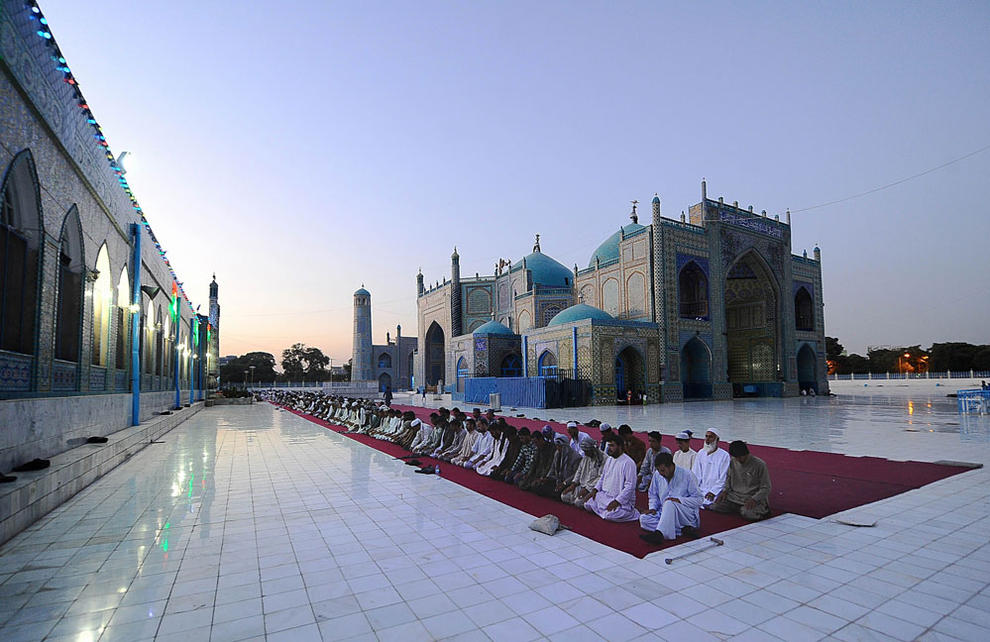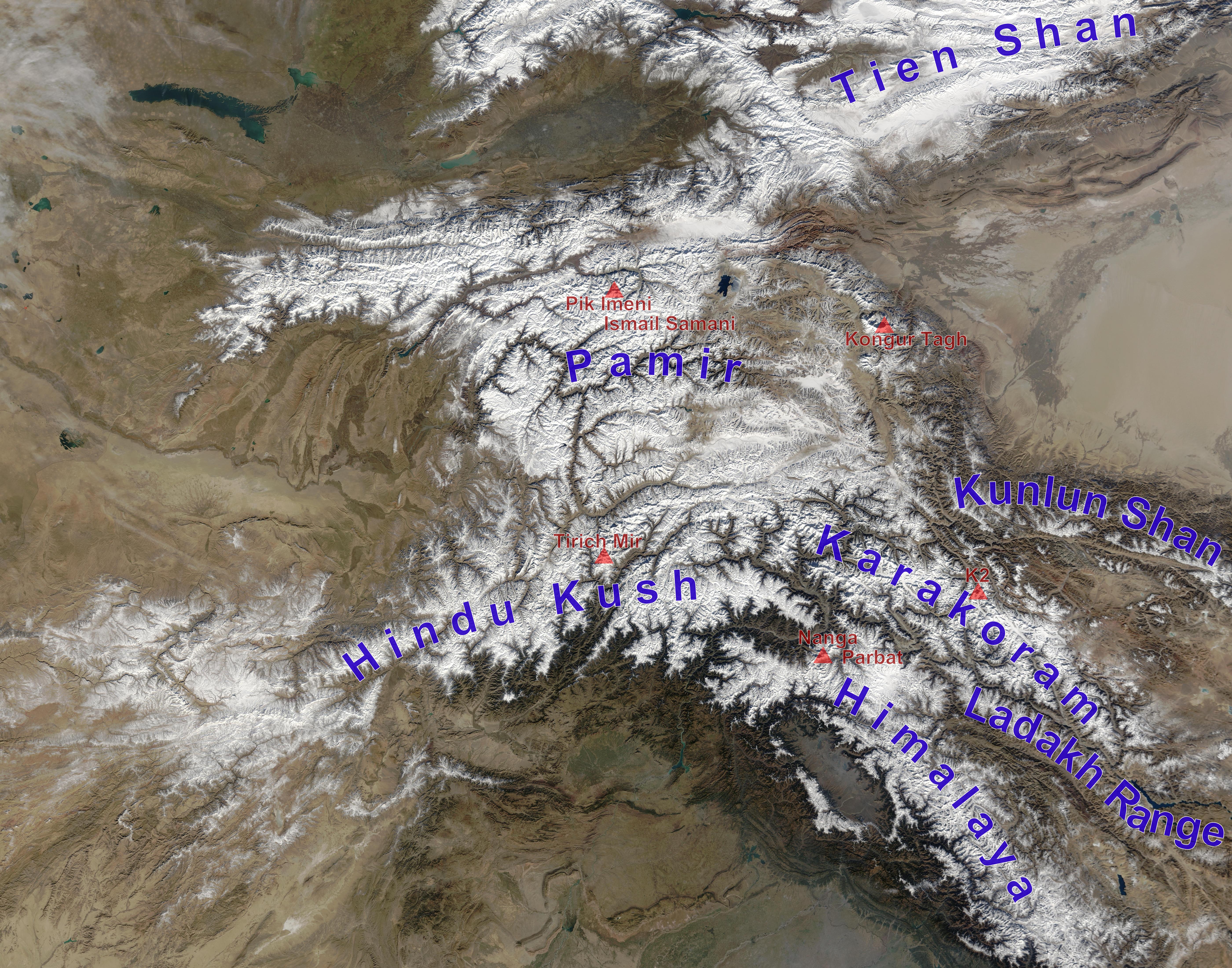|
Religion In Afghanistan
Sunni Islam (Hanafi/ Deobandi) is the largest and the state religion of the Islamic Emirate of Afghanistan. According to ''The World Factbook'', Sunni Muslims constitute between 84.7 and 89.7% of the population, and Shia Muslims between 10 and 15%. Other religions are followed by 0.3% of the population. In 2022, Freedom House rated Afghanistan's religious freedom as 1 out of 4. History Religious demographics in the region known today as Afghanistan have shifted numerous times in history. In ancient and classical periods, Zoroastrianism, Hinduism, followed by Buddhism were the primary religions in the region. Islam gradually became the primary religion in the region after first being introduced in the 7th century A.D., when the Rashidun Caliphate conquered parts of the region. The religion Zoroastrianism is believed by some to have originated in what is now Afghanistan between 1800 and 800 BCE, as its founder Zoroaster is thought to have lived and died in Balkh while the ... [...More Info...] [...Related Items...] OR: [Wikipedia] [Google] [Baidu] |
Balkh
Balkh is a town in the Balkh Province of Afghanistan. It is located approximately to the northwest of the provincial capital city Mazar-i-Sharif and approximately to the south of the Amu Darya and the Afghanistan–Uzbekistan border. In 2021–2022, the National Statistics and Information Authority reported that the town had 138,594 residents. Listed as the List of cities in Afghanistan, eighth largest settlement in the country, unofficial 2024 estimates set its population at around 114,883 people. Historically, the site of present-day Balkh was held in considerably high regard due to its religious and political significance in Ariana. A hub of Zoroastrianism and Buddhism, the ancient city was also known to the Ancient Iran, Persians as Zariaspa and to the Ancient Greece, Greeks as Bactra, giving its name to Bactria. As such, it was famously known as the capital of Bactria or Tokharistan. The Italian explorer and writer Marco Polo described Balkh as "a noble city and a great ... [...More Info...] [...Related Items...] OR: [Wikipedia] [Google] [Baidu] |
Historical Vedic Religion
The historical Vedic religion, also called Vedism or Brahmanism, and sometimes ancient Hinduism or Vedic Hinduism, constituted the religious ideas and practices prevalent amongst some of the Indo-Aryan peoples of the northwest Indian subcontinent (Punjab and the western Ganges plain) during the Vedic period ( 1500–500 BCE). These ideas and practices are found in the Vedic texts, and some Vedic rituals are still practised today. The Vedic religion is one of the major traditions which Origins of Hinduism, shaped modern Hinduism, though present-day Hinduism is significantly different from the historical Vedic religion. The Vedic religion has roots in the Indo-Iranians, Indo-Iranian culture and religion of the Sintashta culture, Sintashta ( 2200–1750 BCE) and Andronovo culture, Andronovo ( 2000–1150 BCE) cultures of Eurasian Steppe. This Indo-Iranian religion borrowed "distinctive religious beliefs and practices" from the non-Indo-Aryan Bactria–Margiana Archaeological Compl ... [...More Info...] [...Related Items...] OR: [Wikipedia] [Google] [Baidu] |
Indo-Aryan Peoples
Indo-Aryan peoples are a diverse collection of peoples predominantly found in South Asia, who (traditionally) speak Indo-Aryan languages. Historically, Aryans were the Indo-Iranian speaking pastoralists who migrated from Central Asia into South Asia and introduced the Proto-Indo-Aryan language. The early Indo-Aryan peoples were known to be closely related to the Indo-Iranian group that have resided north of the Indus River; an evident connection in cultural, linguistic, and historical ties. Today, Indo-Aryan speakers are found south of the Indus, across the modern-day regions of Bangladesh, Nepal, eastern-Pakistan, Sri Lanka, Maldives and northern-India. History Proto-Indo-Iranians The introduction of the Indo-Aryan languages in the Indian subcontinent was the outcome of a migration of Indo-Aryan people from Central Asia into the northern Indian subcontinent (modern-day Bangladesh, Bhutan, India, Nepal, Pakistan, and Sri Lanka). These migrations started appr ... [...More Info...] [...Related Items...] OR: [Wikipedia] [Google] [Baidu] |
Avesta
The Avesta (, Book Pahlavi: (), Persian language, Persian: ()) is the text corpus of Zoroastrian literature, religious literature of Zoroastrianism. All its texts are composed in the Avestan language and written in the Avestan alphabet. Modern Edition (book), editions of the Avesta are based on the various manuscript traditions that have survived in Zoroastrianism in India, India and Zoroastrianism in Iran, Iran. The individual texts of the Avesta were originally Oral tradition, oral compositions. They were composed over a long period of several centuries during the Avestan period, Old Iranian period (possibly ranging from 15th century BCE – 4th century BCE). The written transmission began during the Sassanian empire, Sassanian period, with the creation of the Avestan alphabet. The resulting texts were then compiled into a comprehensive edition of the Sasanian Avesta, Avesta in 21 volumes. This edition was lost sometime after the 10th century CE and only a small part survi ... [...More Info...] [...Related Items...] OR: [Wikipedia] [Google] [Baidu] |
Kabulistan
Kabulistan ( Persian: کابلستان) is a historical regional name referring to the territory that is centered on present-day Kabul Province of Afghanistan. By the 10th century, Ibn Khordadbeh and the Hudud al-'Alam report the southern part of the Hindu Kush, i.e. the regions of Sistan, Rukhkhudh, Zabulistan and Kabul to make up the Khorasan marches. During the 16h century, founder of the Mughal Empire, Babur states in his Baburnama, his memoirs: The people of Hindustān call every country beyond their own Khorasān, in the same manner as the Arabs term all except Arabia, Ajem. On the road between Hindustān and Khorasān, there are two great marts: the one Kābul, the other Kandahār. Caravans, from Ferghāna, Tūrkestān, Samarkand, Balkh, Bokhāra, Hissār, and Badakhshān, all resort to Kābul; while those from Khorasān repair to Kandahār. This country lies between Hindustān and Khorasān. In many Greek and Latin sources, particularly editions of Ptolemy' ... [...More Info...] [...Related Items...] OR: [Wikipedia] [Google] [Baidu] |
Darius I Of Persia
Darius I ( ; – 486 BCE), commonly known as Darius the Great, was the third King of Kings of the Achaemenid Empire, reigning from 522 BCE until his death in 486 BCE. He ruled the empire at its territorial peak, when it included much of West Asia, parts of the Balkans (Thrace–Macedonia and Paeonia) and the Caucasus, most of the Black Sea's coastal regions, Central Asia, the Indus Valley in the far east, and portions of North Africa and Northeast Africa including Egypt (), eastern Libya, and coastal Sudan. Darius ascended the throne by overthrowing the Achaemenid monarch Bardiya (or ''Smerdis''), who he claimed was in fact an imposter named Gaumata. The new king met with rebellions throughout the empire but quelled each of them; a major event in Darius's life was his expedition to subjugate Greece and punish Athens and Eretria for their participation in the Ionian Revolt. Although his campaign ultimately resulted in failure at the Battle of Marathon, he succeeded in the re- ... [...More Info...] [...Related Items...] OR: [Wikipedia] [Google] [Baidu] |
Epigraphy
Epigraphy () is the study of inscriptions, or epigraphs, as writing; it is the science of identifying graphemes, clarifying their meanings, classifying their uses according to dates and cultural contexts, and drawing conclusions about the writing and the writers. Specifically excluded from epigraphy are the historical significance of an epigraph as a document and the artistic value of a literature, literary composition. A person using the methods of epigraphy is called an ''epigrapher'' or ''epigraphist''. For example, the Behistun inscription is an official document of the Achaemenid Empire engraved on native rock at a location in Iran. Epigraphists are responsible for reconstructing, translating, and dating the trilingual inscription and finding any relevant circumstances. It is the work of historians, however, to determine and interpret the events recorded by the inscription as document. Often, epigraphy and history are competences practised by the same person. Epigraphy is ... [...More Info...] [...Related Items...] OR: [Wikipedia] [Google] [Baidu] |
Bactria
Bactria (; Bactrian language, Bactrian: , ), or Bactriana, was an ancient Iranian peoples, Iranian civilization in Central Asia based in the area south of the Oxus River (modern Amu Darya) and north of the mountains of the Hindu Kush, an area within the north of modern Afghanistan, Tajikistan and Uzbekistan. Bactria was strategically located south of Sogdia and the western part of the Pamir Mountains. The extensive mountain ranges acted as protective "walls" on three sides, with the Pamir on the north and the Hindu Kush on south forming a junction with the Karakoram, Karakoram range towards the east. Called "beautiful Bactria, crowned with flags" by the Avesta, the region is considered, in the Zoroastrianism, Zoroastrian faith, to be one of the "Avestan geography, sixteen perfect Iranian lands" that the supreme deity, Ahura Mazda, had created. It was once a small and independent kingdom struggling to exist against nomadic Turya (Avesta), Turanians. One of the early centres of ... [...More Info...] [...Related Items...] OR: [Wikipedia] [Google] [Baidu] |
Aria (satrapy)
Aria ( ''Ar(e)ía'', آريا; Latin ''Aria'', representing Old Persian. 𐏃𐎼𐎡𐎺 ''Haraiva'', Avestan 𐬵𐬀𐬭𐬋𐬌𐬬𐬀 ''Harōiva'') was an Achaemenid region centered on the city of Herat in present-day western Afghanistan. In classical sources, Aria has been several times confused with the greater region of ancient Ariana, of which Aria formed a part. Geography Aria was an Old Persian satrapy, which enclosed chiefly the valley of the Hari River (Greek , this being eponymous to the whole land according to Arrian) and which in antiquity was considered as particularly fertile and, above all, rich in wine. The region of Aria was separated by mountain ranges from the Paropamisadae in the east, Parthia in the west and Margiana and Hyrcania in the north, while a desert separated it from Carmania and Drangiana in the south. It is described in a very detailed manner by Ptolemy and Strabo and corresponds, according to that, almost to the Herat Province of today's A ... [...More Info...] [...Related Items...] OR: [Wikipedia] [Google] [Baidu] |
Arachosia
Arachosia (; ), or Harauvatis ( ), was a satrapy of the Achaemenid Empire. Mainly centred around the Arghandab River, a tributary of the Helmand River, it extended as far east as the Indus River. The satrapy's Persian-language name is the etymological equivalent of in Vedic Sanskrit. In Greek, the satrapy's name was derived from , the Greek-language name for the Arghandab River. Around 330 BCE, Alexander the Great commissioned the building of Alexandria Arachosia as Arachosia's new capital city under the Macedonian Empire. It was built on top of an earlier Persian military fortress after Alexander's conquest of Persia. Etymology "Arachosia" is the Latinized form of Greek (''Arachōsíā''). "The same region appears in the Avestan '' Vidēvdāt'' (1.12) under the indigenous dialect form 𐬵𐬀𐬭𐬀𐬓𐬀𐬌𐬙𐬍 - (whose ''-axva-'' is typical non-Avestan)." In Old Persian inscriptions, the region is referred to as 𐏃𐎼𐎢𐎺𐎫𐎡𐏁, written ''h ... [...More Info...] [...Related Items...] OR: [Wikipedia] [Google] [Baidu] |
Medes
The Medes were an Iron Age Iranian peoples, Iranian people who spoke the Median language and who inhabited an area known as Media (region), Media between western Iran, western and northern Iran. Around the 11th century BC, they occupied the mountainous region of northwestern Iran and the northeastern and eastern region of Mesopotamia in the vicinity of Ecbatana (present-day Hamadan). Their consolidation in Iran is believed to have occurred during the 8th century BC. In the 7th century BC, all of western Iran and some other territories were under Median rule, but their precise geographic extent remains unknown. Although widely recognized as playing an important role in the history of the ancient Near East, the Medes left no written records to reconstruct their history. Knowledge of the Medes comes only from foreign sources such as the Assyrians, Babylonians, Armenians and Ancient Greece, Greeks, as well as a few Iranian archaeological sites, which are believed to have been occu ... [...More Info...] [...Related Items...] OR: [Wikipedia] [Google] [Baidu] |







